Guillaume Vaudaux-Ruth
ISIR
SALAD: Self-Assessment Learning for Action Detection
Nov 13, 2020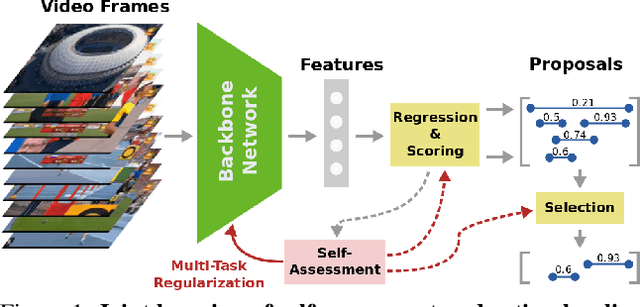
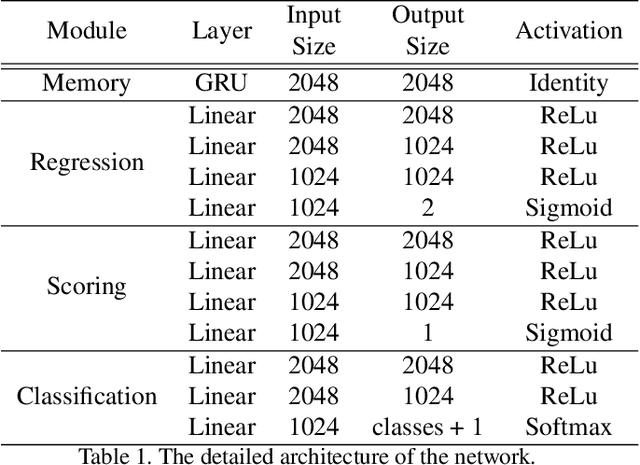
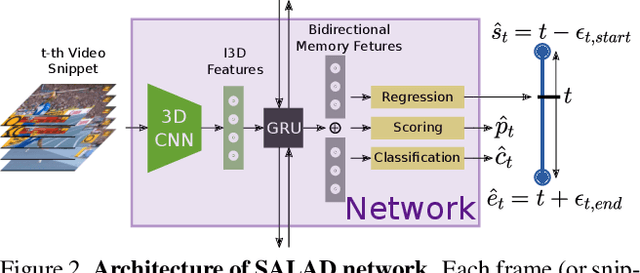
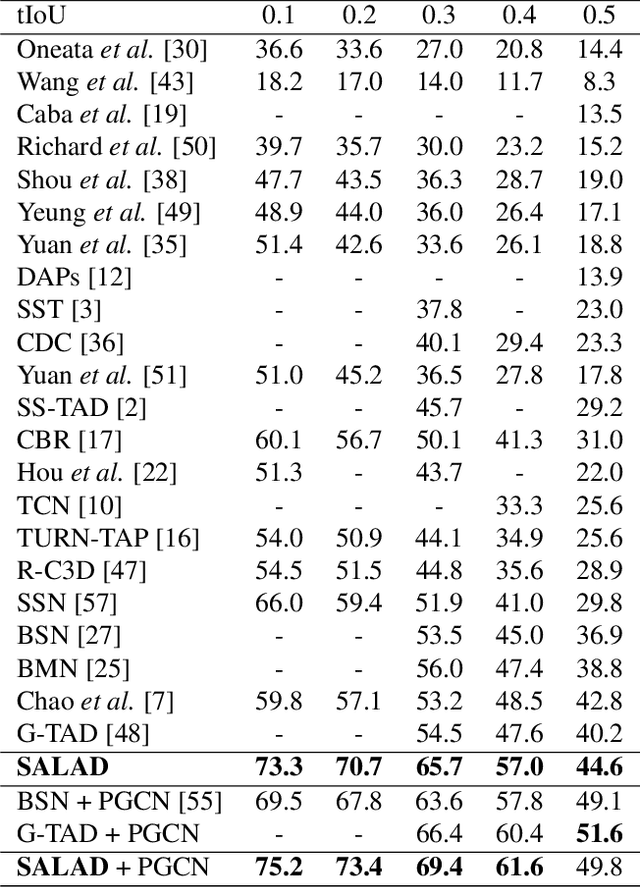
Abstract:Literature on self-assessment in machine learning mainly focuses on the production of well-calibrated algorithms through consensus frameworks i.e. calibration is seen as a problem. Yet, we observe that learning to be properly confident could behave like a powerful regularization and thus, could be an opportunity to improve performance.Precisely, we show that used within a framework of action detection, the learning of a self-assessment score is able to improve the whole action localization process.Experimental results show that our approach outperforms the state-of-the-art on two action detection benchmarks. On THUMOS14 dataset, the mAP at tIoU@0.5 is improved from 42.8\% to 44.6\%, and from 50.4\% to 51.7\% on ActivityNet1.3 dataset. For lower tIoU values, we achieve even more significant improvements on both datasets.
ActionSpotter: Deep Reinforcement Learning Framework for Temporal Action Spotting in Videos
Apr 15, 2020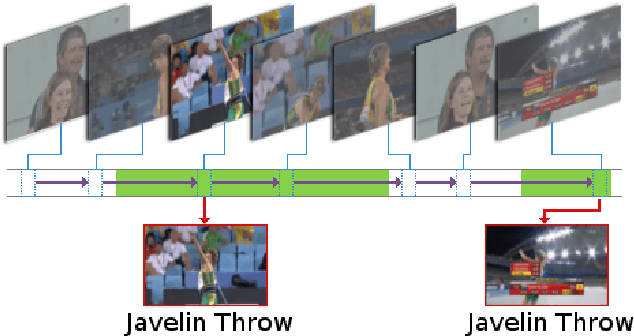
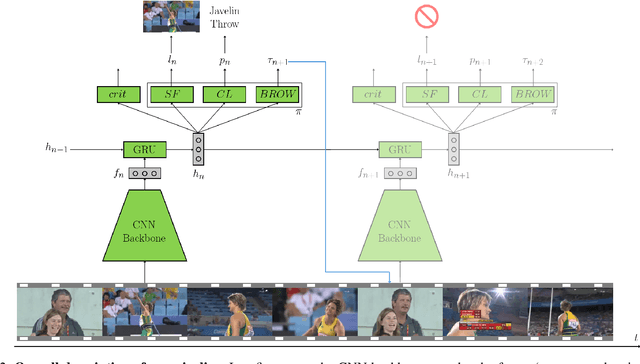

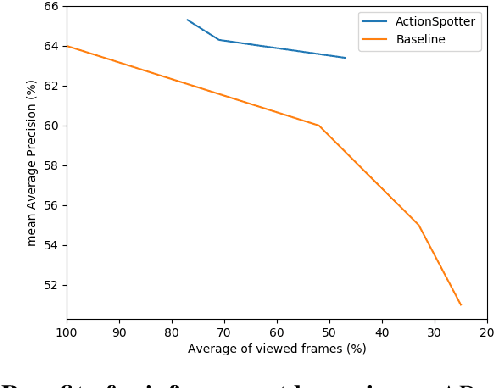
Abstract:Summarizing video content is an important task in many applications. This task can be defined as the computation of the ordered list of actions present in a video. Such a list could be extracted using action detection algorithms. However, it is not necessary to determine the temporal boundaries of actions to know their existence. Moreover, localizing precise boundaries usually requires dense video analysis to be effective. In this work, we propose to directly compute this ordered list by sparsely browsing the video and selecting one frame per action instance, task known as action spotting in literature. To do this, we propose ActionSpotter, a spotting algorithm that takes advantage of Deep Reinforcement Learning to efficiently spot actions while adapting its video browsing speed, without additional supervision. Experiments performed on datasets THUMOS14 and ActivityNet show that our framework outperforms state of the art detection methods. In particular, the spotting mean Average Precision on THUMOS14 is significantly improved from 59.7% to 65.6% while skipping 23% of video.
 Add to Chrome
Add to Chrome Add to Firefox
Add to Firefox Add to Edge
Add to Edge